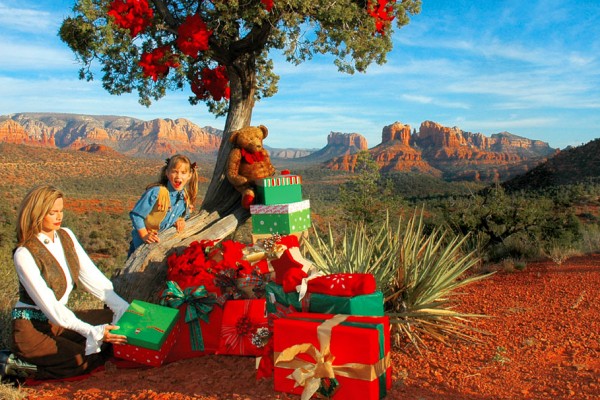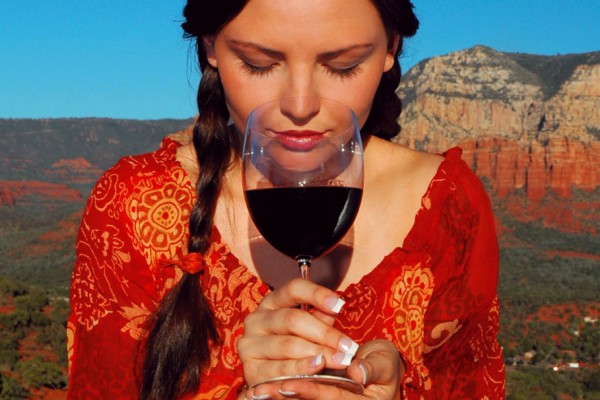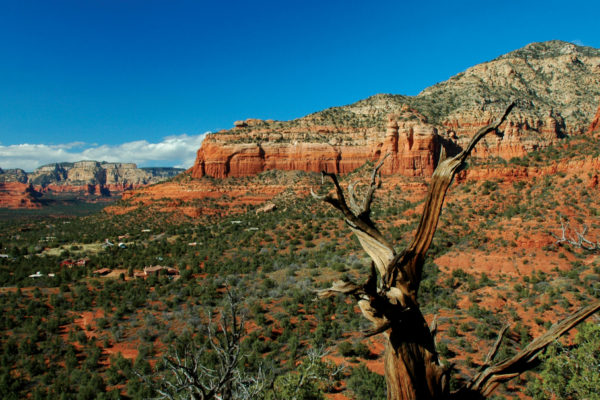Continued (page 5 of 5)
David Muench: Monument Valley
If you enjoy Southwestern landscape photography, chances are you’ve seen David Muench’s images in magazines, books, calendars, cards, and prints. At age 71, David still spends much of his time photographing the land he learned to love from his photographer father. David’s book, Arizona, originally published in 1997, gets a new printing this year. David has a deep love for the red sandstone formations of Monument Valley Navajo Tribal Park, the iconic western film location on the Arizona-Utah border. “It’s all about light and place,” David says. “Mother Nature produces some awesome sights and it’s rewarding to try to match those photographically.” See more of his work at www.muenchphotography.com
Sedona Monthly: When did you first photograph Monument Valley?
David: I was a sophomore in high school – probably about 1953 – when I was out with my dad [photographer Josef Muench]. For the past six or seven years I’ve been holding photo workshops once a year at Monument Valley. In the 1970s, ’80s, and ’90s, I would probably go out there twice a year.
What were your first impressions of the area?
I would travel with my mom and dad, usually around Christmas or New Year’s, and we’d stay with the Gouldings [of Gouldings Lodge and Tours]. No one was around. We’d go out the same time John Ford was making movies but I never met any of the actors. We’d spend time with the Navajo families. The ripples in the sand dunes made a big impression on me. When I first started photographing I’d go to the dunes early in the day to try to capture them without footprints.
What are the best times of year and day for photographing in Monument Valley?
Lighting is the whole guide. October through February, the low lighting means deep toned images. Summer is ordinary unless you have some great thunderheads. The wildflowers in May can be pretty. Personally, I like October and February because the lighting is so striking. You’ll want to shoot early and late in the day. Shoot before sunrise looking at the Mittens or just after sunset when you have the earth shadow. Dawn and dusk are also when the wind’s quietest. Dust storms are eerie and quiet to photograph but they are deadly on camera equipment.
Monument Valley is a Tribal Park and there are many places visitors can’t explore. How do you deal with that?
You can hire Navajo guides and they can take you into areas that are off-limits if you are on your own. It’s a nice experience.
What camera do you use? Any special equipment?
I use a 4×5 Linhof and a Canon EOS-1V 35mm. I shoot with low-speed transparency film. I like Fuji Velvia 100F. I don’t like to overfilter. A circular polarizer is very important and the graduated density filters are good – I personally like the one-stop version – because they balance the light.
How much manipulation do you do on computer or in the darkroom?
I worked in the darkroom in the early 1970s when I printed my own work but I haven’t done that in a long time. I would dodge and burn, but I didn’t want to control it that much. I try to make the photo as best as I can before developing and get the best shot.
Any last piece of advice?
Follow the light. You might have to come back to a spot to capture it in a strong mood, but make your photo something you respond to. Monument Valley is a very dynamic landscape and you want to use the light to enhance that.
MORE SEDONA ROAD TRIPS: Lake Powell, Havasu Canyon, 3 slot canyons, 10 places to go to beat the Arizona heat, Acoma Pueblo, Grand Canyon, The Wave, Oak Creek Canyon, Crown King, Jerome, Sunset Crater Volcano, Wupatki National Monument, Arizona animal parks, Monument Valley, Phoenix’s Musical Instrument Museum, Navajo National Monument, Mormon Lake, Canyon de Chelly



